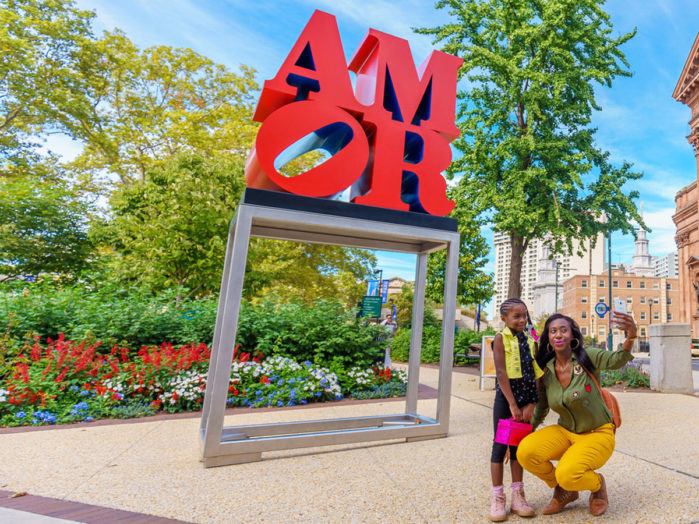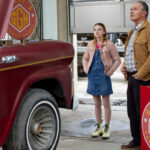Philadelphia, a city rich in history and culture, is also famously known as the home of love – specifically, the iconic LOVE sculpture. But Where Is The Love Original, and what else can you discover around it? The answer lies in LOVE Park, officially known as John F. Kennedy Plaza, a vibrant hub that embodies the spirit of its famous artwork and offers much more to explore.
Originally designed as a grand entrance to the Benjamin Franklin Parkway, LOVE Park has evolved into a beloved public space. After capturing your picture with Robert Indiana’s renowned LOVE sculpture, take your time to immerse yourself in the park’s welcoming atmosphere. It features lush green spaces perfect for relaxation, a central fountain providing a soothing ambiance, and meandering walking paths ideal for a leisurely stroll. Comfortable seating areas are scattered throughout, inviting visitors to pause and soak in the urban scenery.
Adding to the park’s appeal is the newly opened LOVE Park Visitor Center in May 2021. This modern kiosk serves as a welcoming point for tourists and locals alike, offering information and services to enhance the park experience.
LOVE Park’s design fosters a dynamic environment, attracting a diverse crowd, from international travelers to local residents enjoying their lunch break. It’s a place where different energies converge, whether you are a sunbather seeking warmth, a fitness enthusiast looking for an outdoor workout spot, or a performer wanting to engage with an audience.
Furthermore, LOVE Park transforms into a festive wonderland each year as it hosts Philadelphia’s annual Christmas Village. During November and December, the park comes alive with dozens of vendors offering unique gifts, handcrafted items, and delicious snacks in a charming open-air market setting, making it a must-visit destination during the holiday season.
While exploring the theme of love in Philadelphia, it’s worth noting the AMOR sculpture, another significant piece of public art linked to the concept of love. Created by Robert Indiana as well, AMOR (meaning “love” in Spanish and Latin) was initially installed at the Philadelphia Museum of Art in 2015 to commemorate Pope Francis’ visit.
Later, in December 2016, the AMOR sculpture found its permanent home at Sister Cities Park, a short walk from LOVE Park. This placement creates a delightful art walk experience, allowing visitors to appreciate two distinct yet thematically connected sculptures within close proximity.
For those interested in a deeper understanding of the AMOR sculpture, the Association for Public Art provides an insightful audio program. Available in both English and Spanish, this audio guide interprets the artwork and includes rare archival recordings of Robert Indiana himself, offering valuable context and enriching the visitor experience.
 Close-up shot of a mother and daughter taking a selfie in front of the Amor statue at Sister Cities Park, Philadelphia, emphasizing the statue's artistic details and accessibility for public interaction
Close-up shot of a mother and daughter taking a selfie in front of the Amor statue at Sister Cities Park, Philadelphia, emphasizing the statue's artistic details and accessibility for public interaction
In conclusion, when asking “where is the love original,” the answer is definitively Philadelphia’s LOVE Park. It’s not just the location of the iconic LOVE sculpture but a dynamic public space that embodies connection, community, and urban vibrancy. Extending your exploration to Sister Cities Park to view the AMOR sculpture further enriches this thematic journey, offering a deeper appreciation for Philadelphia’s commitment to public art and the enduring power of love in its many forms.
